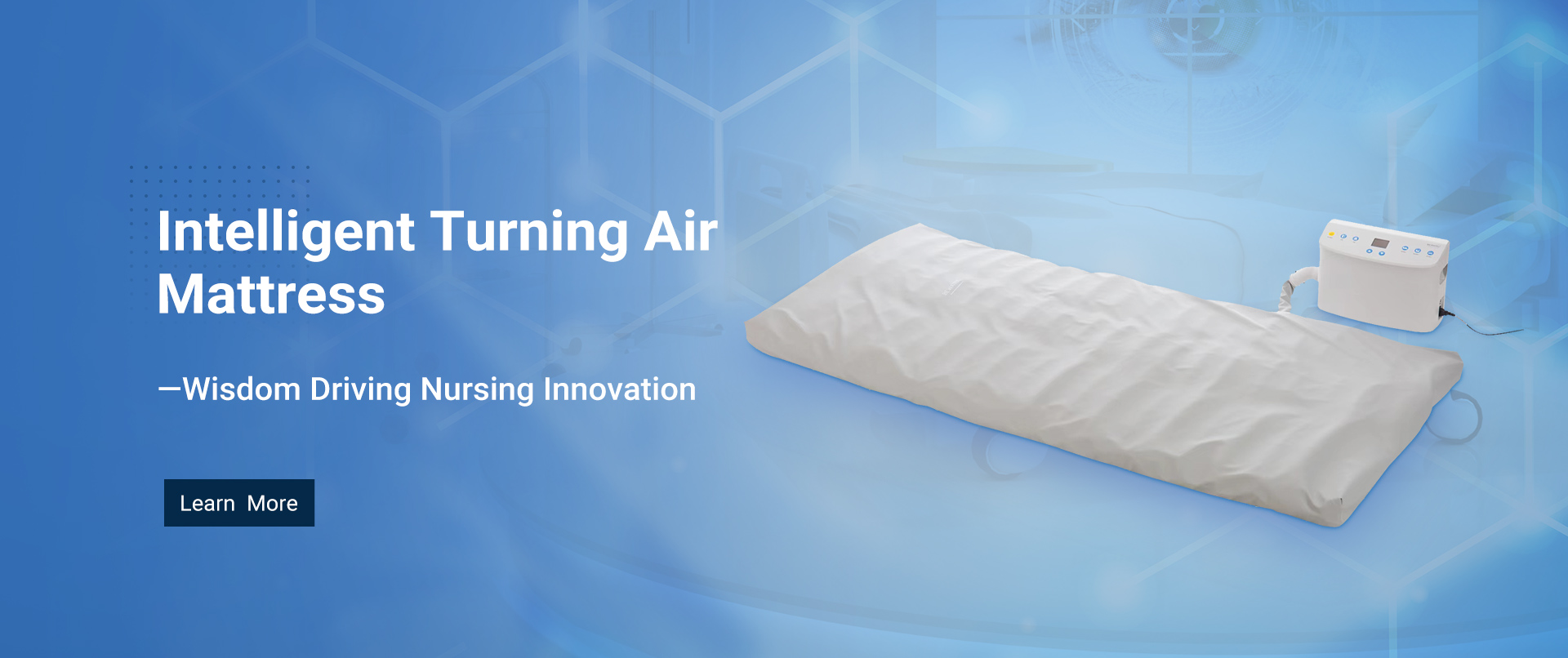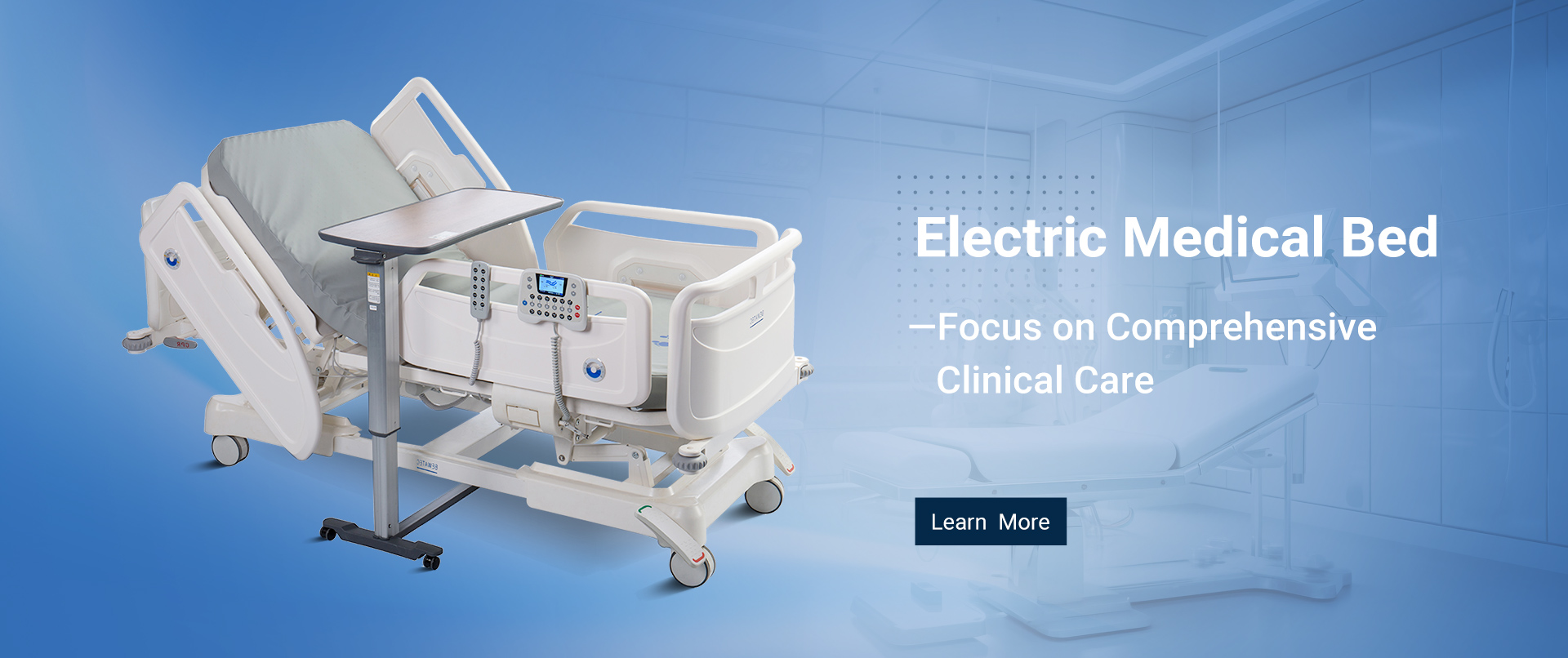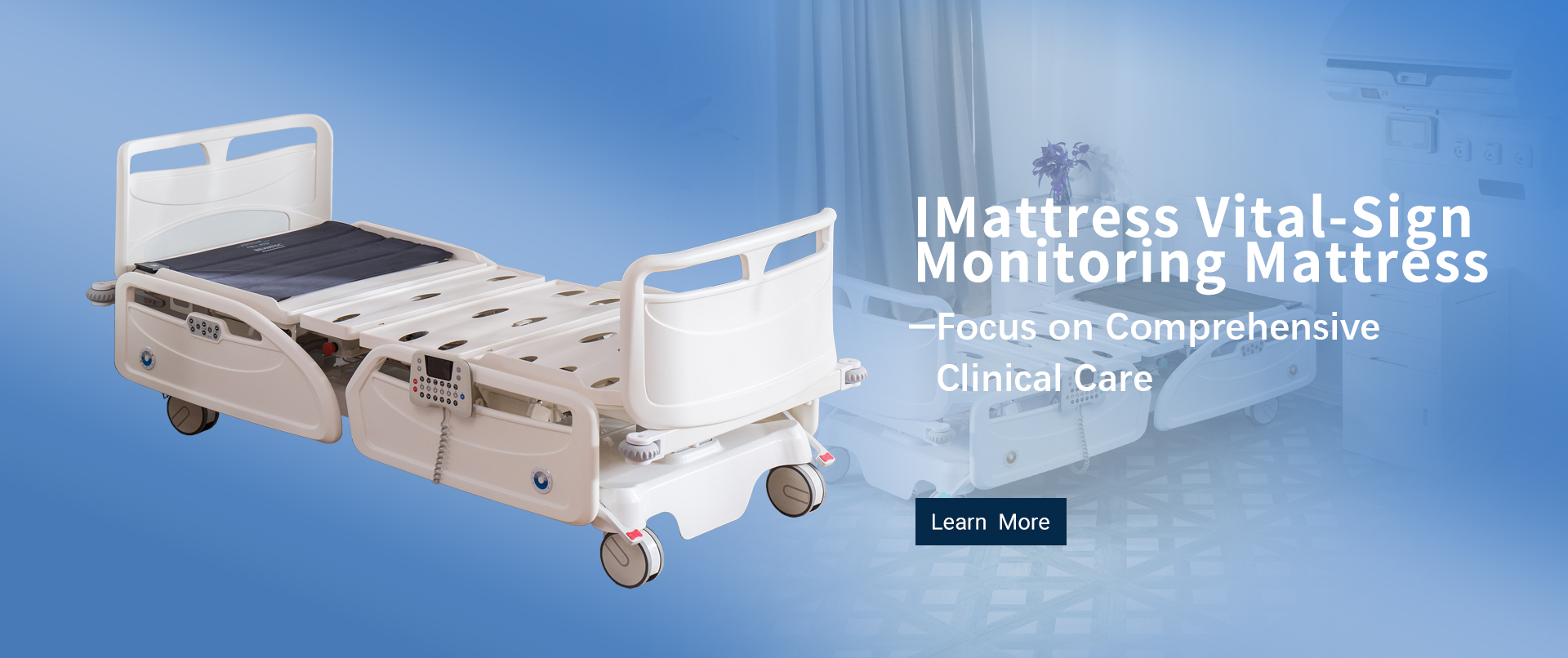
Choosing the Right Manufacturer for Best Patient Comfort with a Comparative Analysis
Table of Contents
- Understanding Patient Comfort: The Role of Manufacturer Quality in Healthcare Products
- Key Metrics for Evaluating Manufacturer Performance: A Data-Driven Approach
- Comparative Analysis: Top Manufacturers in Patient-Centric Design
- Assessing Patient Feedback: Data Insights from Industry Surveys
- The Impact of Material Choices on Patient Comfort: A Comparative Review
- Future Trends in Manufacturing for Enhanced Patient Experience: An Industry Outlook
- FAQS
- Related Posts
You know, in today’s fast-changing world of healthcare, making sure patients are comfortable is super important for everyone making medical devices. I came across a report from the World Health Organization that really drives this point home: when care is centered around the patient, it can boost satisfaction and outcomes in a big way, which means folks tend to recover better.

Now, as everyone hops on the digital transformation bandwagon, companies like Bewatec (Zhejiang) Medical Device Co., Ltd. are leading the charge with fresh ideas that focus on both comfort and safety in medical care. They’re really pushing the envelope by using smart tech and personalized care journeys to change the way patients experience healthcare.
And with manufacturers feeling the pressure to balance functionality and comfort, it’s become crucial to compare potential suppliers to find those who truly get these essential goals. Ultimately, it’s all about creating a more caring and effective healthcare environment for everyone involved.
Understanding Patient Comfort: The Role of Manufacturer Quality in Healthcare Products
You know, it's really important to get a grip on how comfortable patients feel in healthcare settings. And believe it or not, the quality of the medical devices that companies make plays a huge part in making that happen! Lately, studies have shown that patients are expecting more and more, especially when it comes to the tech we use for medical imaging and treatment. Take MRI machines, for example. The newer models have upped their game with sharper images and quicker results, which can really help patients feel more at ease during their scans. Plus, hospitals that make it a point to use top-notch equipment tend to see higher satisfaction levels among patients. It just goes to show that healthcare providers need to buddy up with manufacturers who are all about innovation and delivering quality.
And let's not forget about assistive technology—it's becoming more and more vital in healthcare today. Devices and products designed for people with disabilities or limited mobility really make a difference in how comfortable patients feel. A recent survey pointed out that what people are really after in healthcare experiences is that personal touch and a sense of support. As we move forward in this ever-changing landscape, it’s super important for organizations to team up with manufacturers that focus on patient-centered designs and functionality. After all, care should be not just effective, but also kind and responsive to what patients really need.
Key Metrics for Evaluating Manufacturer Performance: A Data-Driven Approach
When it comes to picking out a manufacturer for medical devices, we really need to keep patient comfort at the forefront, right? A solid, data-driven approach is super important here. Did you know that around 70% of patients say comfort is their top priority when they're looking at medical interventions? That makes it a big deal for manufacturers to create not just high-quality stuff, but also to hit those comfort benchmarks. So, key performance indicators—or KPIs, if you wanna sound fancy—like how ergonomic the design is, how soft the materials feel, and the ratings from user feedback should definitely be taken seriously. Like, take the 2022 Health Device Performance Report, for instance; it showed that companies that do ergonomic testing saw a whopping 30% higher satisfaction rate from patients compared to those that didn’t bother.
And there's more! Data from the National Institute of Health (NIH) tells us that devices made with comfort in mind can actually boost adherence to prescribed treatments by 15%. That’s pretty significant! It really highlights that when manufacturers focus on user-centered design, they're not just making devices that are comfy, but they're also improving overall treatment success. By crunching the numbers and looking at these metrics, stakeholders can make smarter choices when picking manufacturers. This way, we can ensure that patient comfort is always front and center in the healthcare scene.
Comparative Analysis: Top Manufacturers in Patient-Centric Design
You know, in today’s ever-changing healthcare world, picking the right manufacturer focused on patient-centric design is super important if we want to keep patients comfy. If we take a closer look at some of the top manufacturers, we see just how much advanced tech—especially artificial intelligence—is shaking things up in the pharmaceutical scene. AI isn’t just speeding up drug discovery and formulation; it’s also becoming a game changer for quality control and keeping an eye on things after the products hit the market. This all leads to better outcomes for patients. Manufacturers that jump on the AI bandwagon can really streamline their operations and spark some serious innovation, setting the standards for patient-focused design.
And let’s face it, there’s never been a stronger focus on putting patients first. Industry experts have highlighted four key pillars that really capture what this is all about: understanding patient needs, genuinely integrating feedback, making sure everything’s accessible, and keeping things transparent during clinical trials and product development. With the market for remote patient monitoring booming and expected to grow even more, manufacturers that zero in on these pillars can really fine-tune their offerings to fit what patients are looking for. This smart strategy not only helps them tackle the hurdles in drug development but also sets them up as leaders in healthcare that truly cares about the patient experience.
Choosing the Right Manufacturer for Best Patient Comfort with a Comparative Analysis
| Manufacturer | Material Quality | Design Ergonomics | Patient Feedback Score (out of 10) | Innovation Rate (%) | Sustainability Practices |
|---|---|---|---|---|---|
| Manufacturer A | High | Excellent | 9 | 15 | Yes |
| Manufacturer B | Medium | Good | 8 | 10 | No |
| Manufacturer C | High | Very Good | 9.5 | 20 | Yes |
| Manufacturer D | Low | Average | 7 | 5 | No |
| Manufacturer E | Medium | Good | 8.5 | 12 | Yes |
Assessing Patient Feedback: Data Insights from Industry Surveys
When it comes to picking a manufacturer that really enhances patient comfort, one of the best resources out there is definitely patient feedback. You know, gathering input from industry surveys gives us a real peek into what patients actually prefer and how they feel about their experiences. These surveys usually point out specific features that matter to patients, like the materials used in medical devices or how comfy the hospital furniture is. By diving into this data, manufacturers can spot trends and see where they can step up their game to better meet the changing needs of patients.
On top of that, using patient testimonials can really sway the way manufacturers make decisions. When patients share positive feedback, it highlights what new ideas are working well, while constructive criticism shows us where we might need to improve. For example, if a bunch of patients mention feeling uncomfortable with a particular product, manufacturers can take that info and tweak their offerings. In the fast-paced world of healthcare today, putting patient comfort first—based on real feedback—can lead to better outcomes and happier patients, which in turn builds loyalty and trust in healthcare providers.

The Impact of Material Choices on Patient Comfort: A Comparative Review
You know, when it comes to making medical devices, the materials used really matter for patient comfort. There’s this report from Grand View Research that predicts the global market for medical textiles—those things that help keep patients comfy—is going to hit a whopping USD 22.6 billion by 2025. That’s a pretty good sign that manufacturers are starting to get just how important it is to think about what goes into these products. For example, using soft, breathable fabrics can really cut down on skin irritation and make a big difference for patients who are in for long-term treatments.
And get this, a study by Smithers Pira did a side-by-side comparison of materials and found that silicone and polyurethane are real winners when it comes to keeping patients comfortable—way better than some of the older materials. Silicone, in particular, is super flexible and molds to the shape of your body, which is a game changer for folks with sensitive skin or those who need to wear medical devices for a while. On the flip side, even though polypropylene is pretty common, it can end up being uncomfortable when worn for too long. As the industry moves forward, it’s more important than ever for manufacturers to really pay attention to their material choices if they want to boost patient outcomes with good design.
Future Trends in Manufacturing for Enhanced Patient Experience: An Industry Outlook
You know, the future of manufacturing in healthcare is really looking like it's about to get a serious upgrade, and I'm not just talking about the tech stuff. These advancements are set to make a big difference in how patients experience care. If you check out events like CHINAPLAS, you’ll see manufacturers flaunting some pretty cool innovations, especially in rubber and plastic tech. They’re really stepping up their game to keep up with what folks are looking for these days.
And get this: by 2032, the artificial intelligence market is expected to go over $1.2 trillion! That’s a jaw-dropping number, right? It means we’re gonna see a lot more efficiencies and smarter solutions popping up in patient care and manufacturing. For manufacturers, it’s becoming really important to weave AI into their operations; it’s all about making patients feel more comfortable and satisfied.
On top of that, with the rise of the digital economy, we’re seeing shifts in how people consume healthcare. A recent study pointed out that the market for SMB software is projected to jump from $69.31 billion in 2024 to a whopping $123.89 billion by 2032! This isn’t just a random statistic—it's a sign that healthcare manufacturers are pivoting their approach to service delivery. They’re focusing more on personalization and creating better experiences for users. So, as these changes unfold, it’ll be the manufacturers who jump on innovative technologies and data-driven insights that really find themselves ahead of the game when it comes to providing top-notch solutions for patient comfort and satisfaction.

FAQS
: Understanding patient comfort is essential as it directly impacts patient satisfaction and outcomes. The quality of medical devices and technology plays a pivotal role in enhancing patient experiences.
Advancements in technology, such as in MRI systems, have improved image quality and speed, which significantly enhances patient comfort during medical procedures.
Patient feedback is a valuable resource that provides insights into patient preferences and experiences, helping manufacturers improve product features and meet evolving patient needs.
Manufacturers can use positive testimonials to highlight successful innovations and constructive criticism to refine products, ultimately influencing their decision-making process and enhancing patient comfort.
Future trends include the integration of artificial intelligence and new consumption patterns driven by the digital economy, which will enhance personalization and improve overall patient experiences.
The AI market is expected to exceed $1.2 trillion by 2032, highlighting the essential role of AI in driving efficiencies and smarter solutions in patient care and manufacturing processes.
Consumer expectations are increasingly driven by a desire for personalized, supportive experiences in healthcare, particularly for individuals with disabilities or restricted mobility.
Healthcare organizations should prioritize partnerships with manufacturers that emphasize patient-centered design and functionality to ensure compassionate and responsive care.
Analyzing survey data allows manufacturers to identify trends, understand specific patient needs, and improve their products to enhance patient comfort and satisfaction.
Innovative technologies, particularly those driven by data insights, are expected to better position manufacturers to provide optimal solutions for patient comfort and satisfaction in the healthcare sector.
Related Posts
-

How to Select the Best Hospital Furniture: Detailed Specifications and Buying Guide for Global Buyers
-

Unlocking Comfort: Benefits of the Best Patient Bed for Enhanced Recovery
-

Future Innovations in Best Hospital Equipment Bed for 2025 and Beyond
-

Leading the Charge: China’s Premier Digital Health Monitoring Innovations for Global Markets
-

Ultimate Guide to Finding the Best Hospital Equipment Online for Global Buyers
-

12 Best Manufacturers for Hospital Beds in China You Should Know








